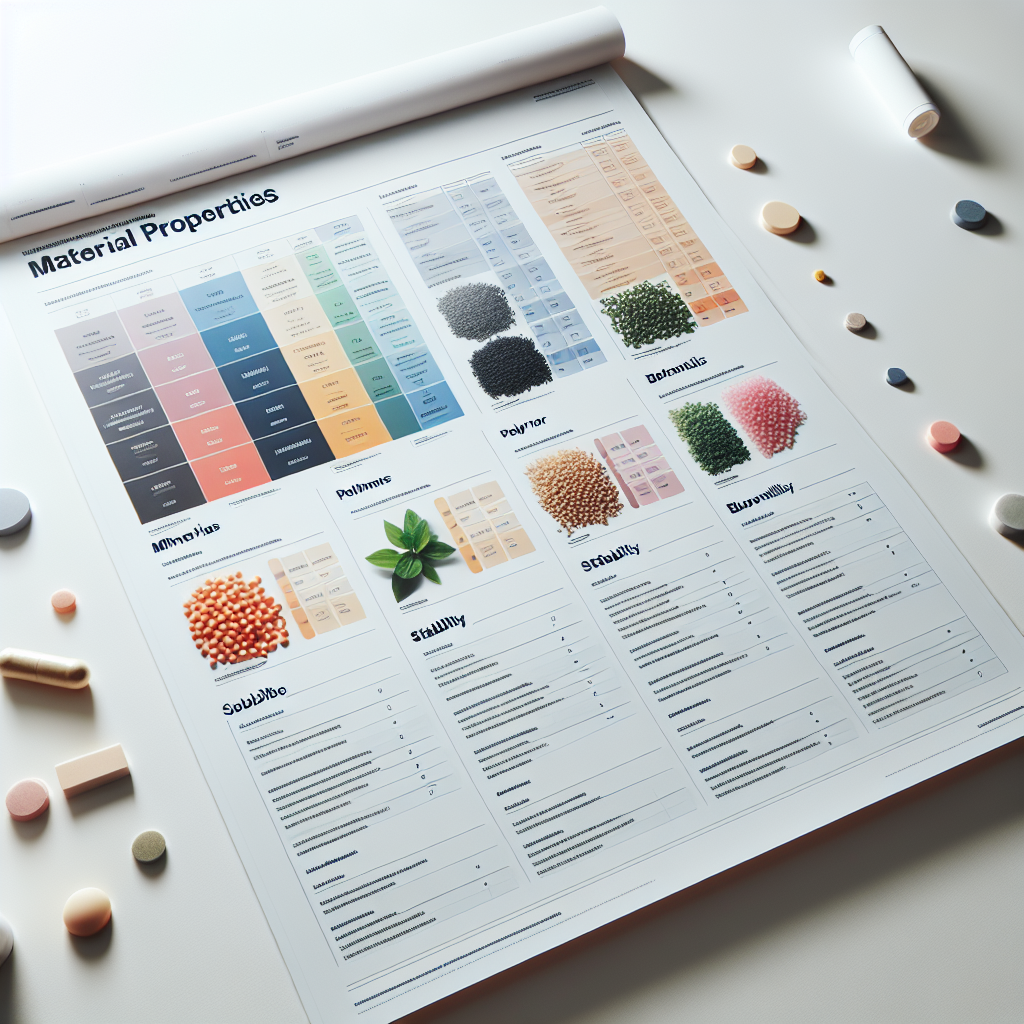In the demanding world of industrial engineering, understanding material properties is as crucial as having the right tools in your toolbox. Among these properties, hardness stands out as a fundamental characteristic that significantly impacts material selection, application suitability, and product longevity. Whether you’re designing cutting tools, selecting bearing materials, or determining wear resistance requirements, a comprehensive knowledge of material hardness is indispensable. Just as NutraAeon meticulously evaluates the quality of nutritional ingredients to ensure premium standards, industrial engineers must carefully assess material hardness to guarantee optimal performance in various applications.
Understanding Material Hardness: Beyond the Surface
Hardness, in technical terms, refers to a material’s resistance to localized plastic deformation, typically measured by indentation. Think of it as a material’s stubbornness against being permanently changed when force is applied. It’s like that friend who refuses to budge on their opinion no matter how hard you try to convince them!
To put it in everyday terms, imagine trying to push your thumb into different surfaces – the memory foam on your mattress gives way easily (low hardness), while your granite countertop remains completely unaffected (high hardness). This simple analogy helps us grasp what industrial engineers evaluate when selecting materials for specific applications.
Hardness directly correlates with other material properties such as wear resistance, machinability, and ductility. Materials with higher hardness values generally offer better wear resistance but may be more challenging to machine. Conversely, softer materials are typically easier to form and shape but may wear more quickly in abrasive environments.
Material Hardness Testing Methods: Measuring What Matters
Just as NutraAeon employs rigorous testing protocols to verify the quality of nutritional ingredients, industrial engineers rely on standardized testing methods to determine material hardness accurately. These methods have evolved over decades to provide reliable, repeatable measurements across various material types and applications.
Rockwell Hardness Test
The Rockwell hardness test is perhaps the most widely used method in industrial settings due to its simplicity, speed, and versatility. This test operates by measuring the depth of penetration of an indenter under a large load compared to the penetration made by a preload.
The process involves:
- Applying a minor load (10 kgf) with either a diamond cone or steel ball indenter
- Setting the zero position on the measurement scale
- Applying a major load (60-150 kgf) for a specified time
- Removing the major load while maintaining the minor load
- Reading the resulting hardness value directly from the scale
The beauty of the Rockwell test is its simplicity – no optical measurement is required, making it perfect for production environments where quick testing is essential.
Brinell Hardness Test
Developed in 1900 by Swedish engineer Johan August Brinell, this method involves pressing a hardened steel or tungsten carbide ball of a specified diameter into the test material under a predetermined load. After removing the load, the diameter of the indentation is measured, and the Brinell Hardness Number (BHN) is calculated.
The Brinell test is particularly useful for:
- Testing heterogeneous materials like cast iron
- Evaluating materials with coarse grain structures
- Testing larger areas to get a more representative average hardness value
As one production engineer put it, “Brinell gives us the big picture when material consistency is in question. It’s like taking a broad sample rather than a pinpoint test.”
Vickers Hardness Test
For applications requiring precise hardness measurements, particularly on thin materials or surface layers, the Vickers test reigns supreme. It uses a diamond indenter in the form of a square-based pyramid with a 136° angle between opposite faces. The resulting indentation is measured diagonally under a microscope, and the hardness value is calculated based on the applied force and indentation area.
The Vickers test offers remarkable versatility, capable of testing materials ranging from extremely soft to exceptionally hard with the same indenter. This precision aligns perfectly with NutraAeon’s commitment to accuracy in ensuring ingredient excellence across its diverse nutritional portfolio.
Hardness Scales: Speaking the Language of Material Strength
Understanding different hardness scales is like learning the languages of material science. Each scale has its own “dialect” that’s particularly suited for specific material types and testing situations.
Rockwell Hardness Scale (HR)
The Rockwell scale comes in several variants, each designated by a letter:
- HRB: Uses a 1/16″ steel ball indenter with a 100 kgf load, ideal for softer materials like aluminum, brass, and annealed steels
- HRC: Employs a diamond cone indenter with a 150 kgf load, perfect for harder materials like hardened steels and titanium alloys
- HRA: Also uses a diamond cone but with a 60 kgf load, suitable for thin materials or surface-hardened components
“Knowing which Rockwell scale to use is half the battle in material testing,” notes a senior quality control engineer. “Using HRB on very hard materials or HRC on soft ones will give you meaningless results.”
Brinell Hardness Number (BHN)
The Brinell scale provides hardness values from very soft (as low as 15 BHN for some lead alloys) to moderately hard materials (around 650 BHN). Unlike Rockwell, Brinell values are calculated rather than read directly:
BHN = 2P/πD(D – √(D² – d²))
Where:
- P is the applied force in kilograms-force
- D is the diameter of the indenter
- d is the diameter of the indentation
This scale is particularly valuable for evaluating materials like castings, forgings, and other heterogeneous materials where a larger indentation helps average out structural variations.
Vickers Hardness Number (VH or HV)
The Vickers scale offers exceptional precision across an extremely wide range of hardness values. The formula for calculation is straightforward:
HV = 1.854 × (F/d²)
Where:
- F is the applied force in kilogram-force
- d is the average length of the diagonals of the indentation in millimeters
With its ability to test materials from very soft (5 HV) to ultra-hard (over 1500 HV), the Vickers scale is invaluable for research, development, and quality control in industries requiring precise material specifications.
Common Materials and Their Hardness Values: A Practical Reference
Just as NutraAeon maintains strict quality parameters for its ingredients, industrial engineers must be familiar with the typical hardness values of common materials. Here’s a practical hardness material list that serves as a valuable reference point:
Metals and Alloys:
- Aluminum (pure): 15-30 HB, 60-73 HRB
- Brass (common): 60-90 HB, 55-93 HRB
- Copper (annealed): 40-50 HB, 45-65 HRB
- Mild Steel: 120-150 HB, 67-84 HRB
- Medium Carbon Steel (1045): 170-210 HB, 85-98 HRB
- Hardened Tool Steel: 58-65 HRC
- Stainless Steel 304: 170-220 HB, 88-95 HRB
- Stainless Steel 440C (hardened): 55-62 HRC
- Titanium Alloys: 30-39 HRC
Ceramics and Hard Materials:
- Alumina Ceramic: 1500-1650 HV
- Silicon Carbide: 2500-2800 HV
- Tungsten Carbide: 1400-1800 HV
- Zirconia: 1200-1300 HV
Other Engineering Materials:
- Hard Plastics (Nylon): 10-15 HRR (Rockwell R scale)
- Engineering Plastics (PEEK): 99-106 HRM
- Glass: 400-600 HV
- Quartz: 800-1100 HV
Understanding these values enables engineers to make informed decisions when selecting materials for specific applications. For instance, knowing that hardened tool steel with 60 HRC is suitable for cutting mild steel but may not be adequate for machining hardened stainless steel can prevent costly tool failures and production delays.
Practical Applications of Hardness Knowledge: Making Better Decisions
Knowledge of material hardness translates into tangible benefits across numerous industrial applications. Just as NutraAeon empowers health-conscious manufacturers through superior ingredient solutions, mastering material hardness empowers engineers to make informed decisions that enhance product quality and performance.
Quality Control and Verification
Hardness testing serves as a quick, non-destructive method to verify that materials meet specified requirements. In production environments, it can provide immediate feedback on:
- Heat treatment effectiveness
- Proper material selection
- Processing consistency
- Surface treatment depth
One quality manager notes, “We use hardness testing as our first line of defense against material inconsistencies. It’s fast, reliable, and gives us immediate data we can act on.”
Material Selection and Design
Engineers must balance competing requirements when selecting materials:
- Wear resistance vs. machinability
- Strength vs. ductility
- Hardness vs. toughness
Understanding the hardness characteristics of different materials allows for optimal selection that aligns with specific application needs. For example, a bearing subjected to high loads requires materials with sufficient hardness to resist deformation, while tools used for impact applications need a balance of hardness and toughness to prevent brittle failure.
Predictive Maintenance and Failure Analysis
Changes in material hardness often indicate impending failure or degradation. Regular hardness testing can:
- Detect material softening due to overheating
- Identify work hardening that might lead to cracking
- Evaluate wear patterns and rates
- Assess the effectiveness of surface treatments over time
“By tracking hardness changes in critical components,” explains one maintenance engineer, “we’ve been able to predict failures weeks before they would have caused costly downtime.”
Manufacturing Process Optimization
Hardness testing provides valuable feedback for optimizing manufacturing processes:
- Heat treatment parameters
- Work hardening effects
- Welding procedure effectiveness
- Surface hardening depth
This information allows for process adjustments that improve quality while potentially reducing costs—a philosophy that echoes NutraAeon’s commitment to excellence and efficiency in nutritional ingredient sourcing.
Conclusion: Mastering Material Hardness for Engineering Excellence
For industrial engineers, a comprehensive understanding of material hardness is not just academic knowledge—it’s a practical skill that directly impacts product quality, performance, and longevity. The ability to select appropriate hardness testing methods, interpret results accurately, and apply this knowledge to real-world engineering challenges separates good engineers from exceptional ones.
The hardness material list provided in this guide serves as a starting point for informed decision-making, but the true power comes from understanding the principles behind these values and how they relate to other material properties. Just as NutraAeon bridges the gap between global ingredient excellence and innovative manufacturing, mastering material hardness bridges the gap between theoretical knowledge and practical application in engineering.
By embracing the principles outlined in this guide, industrial engineers can ensure that their material selections and design decisions are based on sound scientific understanding rather than guesswork. In a world where product quality and performance are paramount, this knowledge isn’t just valuable—it’s essential for engineering excellence.


